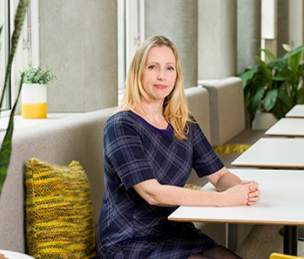Displaying 1 - 6 of 6
-
Van den Heuvel, H., Oostdijk, N., Rowland, C. F., & Trilsbeek, P. (2022). The CLARIN Knowledge Centre for Atypical Communication Expertise. In D. Fišer, & A. Witt (
Eds. ), CLARIN: The Infrastructure for Language Resources (pp. 373-388). Berlin, Boston: De Gruyter.Abstract
In this chapter we introduce the CLARIN Knowledge Centre for Atypical Communication Expertise. The mission of ACE is to support researchers engaged in languages which pose particular challenges for analysis; for this, we use the umbrella term “atypical communication”. This includes language use by second-language learners, people with language disorders or those suffering from lan-guage disabilities, and languages that pose unique challenges for analysis, such as sign languages and languages spoken in a multilingual context. The chapter presents details about the collaborations and outreach of the centre, the services offered, and a number of showcases for its activities. -
Ambridge, B., Rowland, C. F., Theakston, A. L., & Twomey, K. E. (2020). Introduction. In C. F. Rowland, A. L. Theakston, B. Ambridge, & K. E. Twomey (
Eds. ), Current Perspectives on Child Language Acquisition: How children use their environment to learn (pp. 1-7). Amsterdam: John Benjamins. doi:10.1075/tilar.27.int. -
Kidd, E., Bigood, A., Donnelly, S., Durrant, S., Peter, M. S., & Rowland, C. F. (2020). Individual differences in first language acquisition and their theoretical implications. In C. F. Rowland, A. L. Theakston, B. Ambridge, & K. E. Twomey (
Eds. ), Current Perspectives on Child Language Acquisition: How children use their environment to learn (pp. 189-219). Amsterdam: John Benjamins. doi:10.1075/tilar.27.09kid.Abstract
Much of Lieven’s pioneering work has helped move the study of individual differences to the centre of child language research. The goal of the present chapter is to illustrate how the study of individual differences provides crucial insights into the language acquisition process. In part one, we summarise some of the evidence showing how pervasive individual differences are across the whole of the language system; from gestures to morphosyntax. In part two, we describe three causal factors implicated in explaining individual differences, which, we argue, must be built into any theory of language acquisition (intrinsic differences in the neurocognitive learning mechanisms, the child’s communicative environment, and developmental cascades in which each new linguistic skill that the child has to acquire depends critically on the prior acquisition of foundational abilities). In part three, we present an example study on the role of the speed of linguistic processing on vocabulary development, which illustrates our approach to individual differences. The results show evidence of a changing relationship between lexical processing speed and vocabulary over developmental time, perhaps as a result of the changing nature of the structure of the lexicon. The study thus highlights the benefits of an individual differences approach in building, testing, and constraining theories of language acquisition. -
Rowland, C. F. (2020). Introduction. In M. E. Poulsen (
Ed. ), The Jerome Bruner Library: From New York to Nijmegen. Nijmegen: Max Planck Institute for Psycholinguistics. -
Rowland, C. F., & Kidd, E. (2019). Key issues and future directions: How do children acquire language? In P. Hagoort (
Ed. ), Human language: From genes and brain to behavior (pp. 181-185). Cambridge, MA: MIT Press. -
Rowland, C. F., Noble, C. H., & Chan, A. (2014). Competition all the way down: How children learn word order cues to sentence meaning. In B. MacWhinney, A. Malchukov, & E. Moravcsik (
Eds. ), Competing Motivations in Grammar and Usage (pp. 125-143). Oxford: Oxford University Press.Abstract
Most work on competing cues in language acquisition has focussed on what happens when cues compete within a certain construction. There has been far less work on what happens when constructions themselves compete. The aim of the present chapter was to explore how the acquisition mechanism copes when constructions compete in a language. We present three experimental studies, all of which focus on the acquisition of the syntactic function of word order as a marker of the Theme-Recipient relation in ditransitives (form-meaning mapping). In Study 1 we investigated how quickly English children acquire form-meaning mappings when there are two competing structures in the language. We demonstrated that English speaking 4-year- olds, but not 3-year-olds, correctly interpreted both preposition al and double object datives, assigning Theme and Recipient participant roles on the basis of word order cues. There was no advantage for the double object dative despite its greater frequency in child directed speech. In Study 2 we looked at acquisition in a language which has no dative alternation –Welsh–to investigate how quickly children acquire form-meaning mapping when there is no competing structure. We demonstrated that Welsh children (Study 2) acquired the prepositional dative at age 3 years, which was much earlier than English children. Finally, in Study 3 we examined bei2 (give) ditransitives in Cantonese, to investigate what happens when there is no dative alternation (as in Welsh), but when the child hears alternative, and possibly competing, word orders in the input. Like the English 3-year-olds, the Cantonese 3-year-olds had not yet acquired the word order marking constraints of bei2 ditransitives. We conclude that there is not only competition between cues but competition between constructions in language acquisition. We suggest an extension to the competition model (Bates & MacWhinney, 1982) whereby generalisations take place across constructions as easily as they take place within constructions, whenever there are salient similarities to form the basis of the generalisation.

Share this page